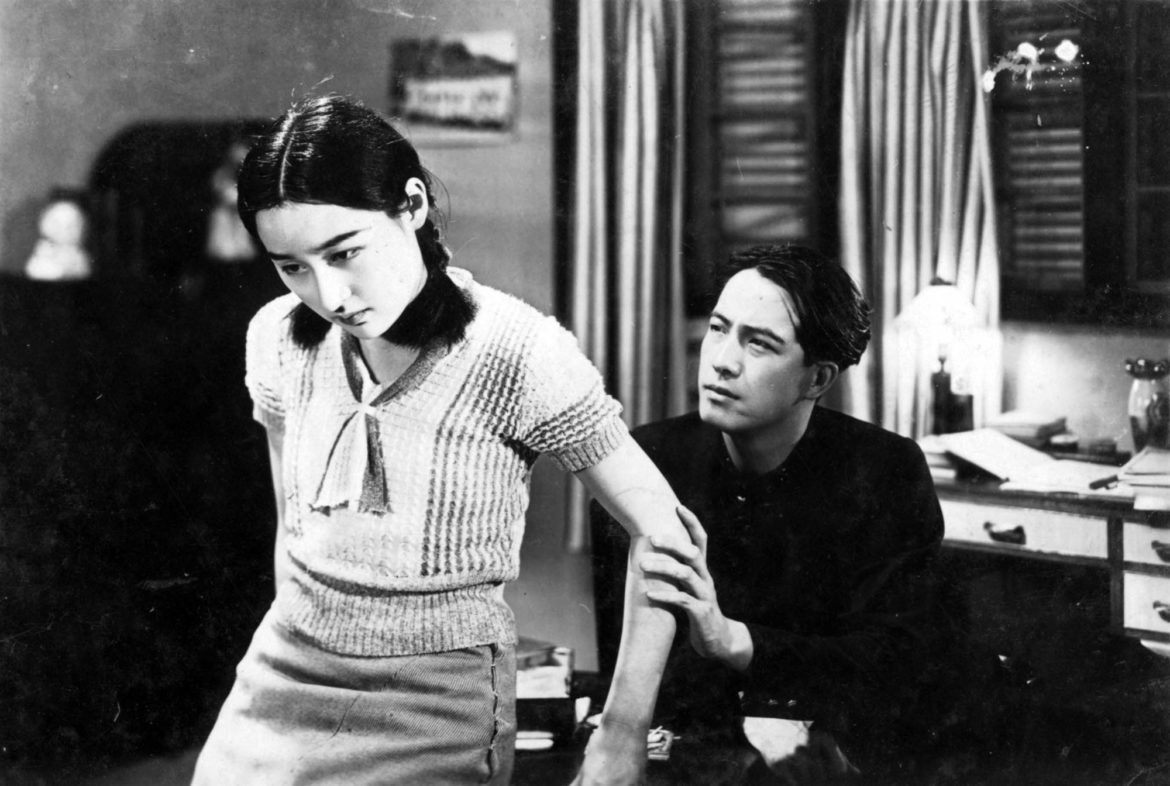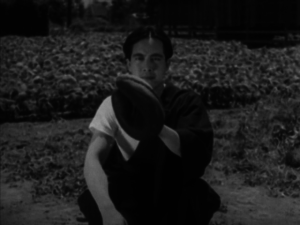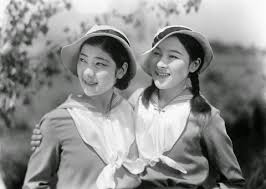The camera tracks from left to right through a lower middle-class suburb in Japan, establishing the textures, geography, and architecture of the neighborhood before arriving at two older boys tossing a baseball around in a yard. The quickness and confidence in director Yasujirô Shimazu’s camera movement almost obscures just how much we learned in less than 30 seconds about the world in which Our Neighbor, Miss Yae takes place.
This will not be a drama transpiring in a royal court or among the wealthy and dissolute, nor will it be an epic. There will be no samurai. This is the world of regular people, doing regular things.
Regular, clumsy people, as it turns out, which we discover almost immediately as older brother Keitaro promptly throws the ball through the neighbor’s window. (Not for the first time, we also learn.)
Shimazu’s gentle story is one about flirtatious youth who pass the time playing sports or going to American movies, duty-bound fathers who are careful not to talk about how much they hate their jobs when the kids are around, and wives and mothers with their own views on life and desire. But it’s also the frequently comic story of doofuses who keep breaking things.
Keitaro is a law student and his kid brother Seiji is an aspiring baseball player. Their worlds overlap with their next-door neighbor Yaeko, who teases and flirts with them in turn. Her clear preference is for Keitaro, whose debonair looks her friend Etsuko compares to Hollywood’s Fredric March (one of several indications these kids’ minds are far from their provincial surroundings). It’s not clear whether he even notices … or if he just absently enjoys the attention.
Out of nowhere, Yaeko’s bolder, more worldly, and unhappily married older sister Kyouko returns to the family house, complicating these relationships further, in the soft but epically-felt way teenage relationships become complicated. In the meantime, the drinking buddy fathers commiserate over their not particularly powerful lot in life with good humor, while their wives fret over the kids and the house when not serving sake.
Shimazu finds moments of quiet, adorable teenage longing – Yaeko’s routine grumpiness at being seated away from her crush, whether at the movies or a restaurant, is delightful – and broad comic interludes – as when Keitaro knocks over tea and a plate of food, tries to hide it in a cushion, only to end up being teased for his trouble.
“Slice of life” is a term that gets thrown around a lot, but it fits Our Neighbor, Miss Yae perfectly. The plot is thin to the point of non-existence, and the film has the feeling of a late afternoon unfolding. Like his fellow early filmmaker Yasujirô Ozu, Shimazu favors carefully framed observation over dramatic incident, though (perhaps in solidarity with his Hollywood-mad teenage protagonists) he skips the rigor of Ozu’s famous tatami-mat perspectives for a more fluid, casual form of storytelling. People are almost always in motion, standing, embracing or teasing.
He also gently pulls back the surface of his characters’ measured, traditional interactions for exchanges that seem much truer – class arises in no uncertain terms in the disillusionment of the grown-ups with work, women’s changing roles in society are alluded to and tepidly accepted, the incursion of Western culture (via cinema especially) is a defining feature of the lives the younger generation lead.
But it would be odd indeed to insist on Our Neighbor, Miss Yae as a fundamentally political picture, except in the sense that all art is political. It’s a drink with a friend after returning from a job you’d hoped would mean more, a window broken again by a baseball and quick conversations about to handle the disastrous situation, a shy look down the aisle in the movie theater at the boy you like and who you wish were sitting a bit closer to.
It charms and charms, and then it ends. Like the Betty Boop cartoon we watch with the kids, it’s a good time at the movies.




